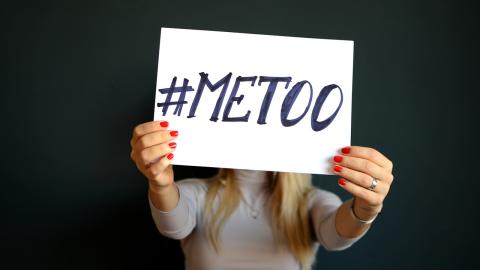Responding to Abuse Toolkit: Grooming
3 comments
1170 views

Responding to Abuse Toolkit: Grooming
As the #MeToo movement hits the church, many churches are requesting information about how to respond. Safe Church Ministry offers, Responding to Abuse: A Toolkit for Churches. Understanding how abuse happens, often through a process of grooming, is a part of this toolkit.
Sexual abuse does not just happen “out of the blue”. Most often a process of grooming is involved, which overcomes a person’s defenses by slowly desensitizing his or her natural reactions to abusive behaviors. Grooming works by mixing positive behaviors with elements of abuse. Abusive elements are added incrementally so as not to alarm the one targeted for abuse, and to normalize inappropriate behaviors. Grooming happens to both children and adults.
Stages of Grooming:
For most of the relationship, the person targeted for abuse may be eager to experience the sense of value and “specialness” gained from the relationship and want to be with the person grooming him or her. This can be very confusing and contributes to later guilt and shame. Because of the staged and confusing progression, the one victimized may not understand that the abuse was intended from the beginning, and that the one perpetrating abuse was the sole initiator. Either or both parties may adhere to a false belief that progression in the relationship was mutual. The grooming process is often responsible for hesitancy to report abuse.
Safe Church, Leadership Development
Connect to The Network and add your own question, blog, resource, or job.
Add Your Post
Comments
I'm glad you are putting a tool kit together. Will one of the resources be what to do if women come forward to share their #metoo story? In one case a woman talked to an elder and said she had never shared the story before, not even with her husband. We've been at a bit of a loss how to help or if we should help.
Thank you for your comment Angela. The #MeToo movement has empowered women to share their stories. We expect to hear many of them within our church communities. Our prayer is that this resource will help people know how to better respond. Below are the very first steps in the "flow chart" which may be helpful. Pay attention to all the articles on The Network that begin with, "Responding to Abuse Toolkit" and you'll get a good preview of the new resource. Pray as we continue the work needed to finish it.
LISTEN! LISTEN! LISTEN!
Carefully and prayerfully listen to any disclosure or allegation of abuse. To be heard is one of the greatest needs of someone who has suffered abuse. So, by simply listening you are already helping immensely. Listening is far more valuable than you might imagine. Be empathetic, recognizing how difficult it is for someone to share his or her story. Try to remain calm and assuring using a matter-of-fact tone (even if what you hear seems shocking to you). Try to withhold judgment until you know more about the situation. There are probably many sides to this story, and many nuances, remember that you are only hearing one perspective at this point.
PAUSE and PRAY:
Take a deep breath; avoid a fast, easy or flippant answer; these situations can be very complicated. PRAY! God knows more than we do, and desires to give us his wisdom. Whether you pray aloud with the person disclosing an allegation of abuse, or pray quietly in your heart, consider God’s presence with you.
Sadly, the story you tell is far too common.
I would encourage you to contact Safe Haven Ministries. This Grand Rapids faith-based organization has a mission to end domestic abuse. They understand how difficult it can be to support a victim of domestic abuse/violence, and the important role the church plays in supporting those affected by this type of abuse/violence. Just as your story noted, survivors of domestic violence are more likely to disclose their experience with abuse to pastors and ministry leaders than any other helping profession.
Motivated by their mission, Safe Haven offers help and guidance to individuals, and they offer a one day Domestic Violence Church Certification Program. In February, twelve of our church members (including ministerial staff, youth leaders, and LiveSafe team members) attended this training. Participation in this certification program provided our church members with comprehensive domestic violence training, the opportunity to develop policies and procedures on how to respond if someone in the congregation or staff is a victim or perpetrator of domestic violence, and ongoing support. We were joined by two other churches. Currently, we are finalizing the comprehensive domestic abuse/violence response plan tailor-made for our church at that training.
Recently, the Network posted an article titled Domestic Abuse: Where is the Church? You can read more information there.
We were all impressed with the quality of this training and the professionalism and expertise of the Safe Haven staff. Our churches need to recognize domestic violence in all its many forms and have the ability to respond appropriately. This training is offered to any church, and we heartily recommend that more of churches avail themselves of this very worthwhile program.
Let's Discuss
We love your comments! Thank you for helping us uphold the Community Guidelines to make this an encouraging and respectful community for everyone.